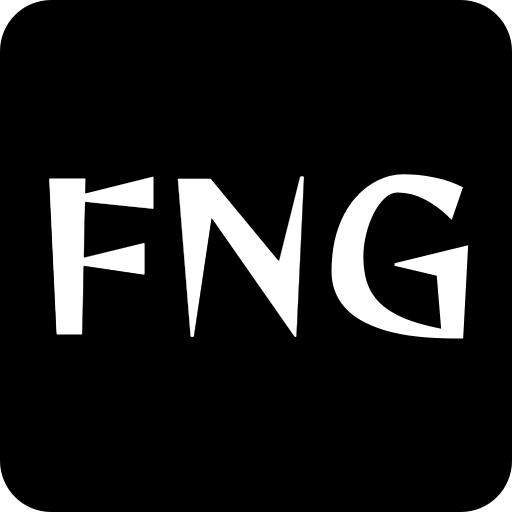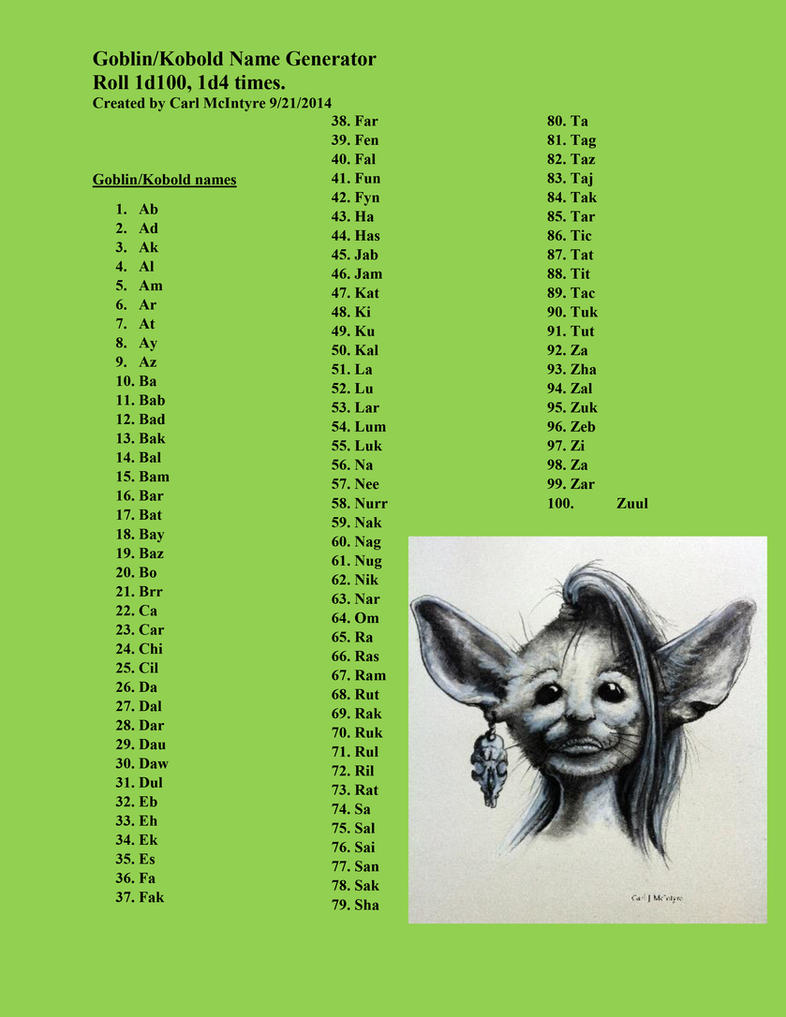Have you ever wondered about the intriguing world of goblin names? If you're diving into mythology, fantasy literature, or gaming, understanding the significance of these names can open up a whole new dimension of storytelling. From their cultural origins to the unique meanings behind each name, goblins offer a treasure trove of linguistic creativity. So, buckle up, because we're about to embark on an epic journey into the realm of goblin naming conventions!
Picture this: you're crafting your next Dungeons & Dragons campaign, and you need a goblin character that stands out. Naming them "Bob" just doesn't cut it, right? That's where the art of goblin names comes in. These names aren't just random strings of syllables; they're steeped in history, culture, and a dash of mischief. Whether you're a fantasy enthusiast or simply curious about the lore, this guide will give you all the tools you need to create authentic and captivating goblin names.
Before we dive deeper, let's address the elephant in the room. Why are goblin names so fascinating? Well, they're not just labels; they're symbols of identity, heritage, and personality. A well-chosen name can instantly convey a goblin's traits, origins, and even their role in the story. So, let's explore the secrets behind these mystical monikers and uncover what makes them so darn cool!
Read also:Unlocking The Net Worth Of Pawn Stars Chumlee A Deep Dive
Understanding the Origins of Goblin Names
Now, let's rewind a bit and take a peek at where goblin names come from. These creatures have been around in folklore for centuries, popping up in tales from Europe, Asia, and beyond. Each culture has its own spin on goblins, and that's reflected in their names. For instance, European goblins often have names that sound rough and guttural, while Asian goblins might have names that are more melodic and intricate. Cool, right?
Historical Roots of Goblin Naming Traditions
Back in the day, goblins were often depicted as mischievous troublemakers, lurking in dark forests or abandoned mines. Their names were crafted to reflect their nature—think of words like "Grimgnash" or "Snarlfang." These names weren't just random; they were carefully chosen to evoke a sense of danger and unpredictability. In many cultures, goblins were believed to be spirits of the earth, and their names often tied them to specific elements or locations.
For example, in Norse mythology, goblins were sometimes called "dvergar," which roughly translates to "dwarf." These names were short and sharp, much like the goblins themselves. Meanwhile, in Celtic folklore, goblins were known as "boggarts," and their names often had a whimsical, playful quality. It's fascinating how different cultures interpreted these creatures in their own unique ways.
The Art of Creating Authentic Goblin Names
Alright, so you want to create your own goblin name. Where do you start? The key is to understand the linguistic patterns that make goblin names so distinct. Think about the sounds and syllables that evoke the essence of a goblin. Are they sharp and aggressive, like "Kragthar"? Or are they smooth and sneaky, like "Zilvix"? The possibilities are endless!
Key Characteristics of Goblin Naming Conventions
- Goblins often have names that are short and punchy, making them easy to remember.
- Consonant-heavy names are common, as they convey a sense of strength and ferocity.
- Many goblin names incorporate guttural sounds, like "gr," "kr," or "th," to emphasize their wild nature.
- Some names include elements related to their environment, such as "Rockfang" or "Shadowclaw."
When crafting a goblin name, it's important to think about the character's personality and role. Is your goblin a fierce warrior or a cunning trickster? Their name should reflect that. For example, a goblin shaman might have a name like "Moonshade," while a goblin thief might be called "Slinktail." The more you tailor the name to the character, the more authentic it will feel.
Exploring Popular Goblin Names in Fantasy Literature
Let's take a moment to appreciate some of the most iconic goblin names from the world of fantasy literature. Authors like J.R.R. Tolkien and Terry Pratchett have given us some truly memorable goblin characters, each with a name that perfectly captures their essence. From "Grima" in "The Hobbit" to "Goblin King" in "Discworld," these names have become part of the cultural lexicon.
Read also:Unlock The Fun Cartoon Characters Phone Numbers That Will Blow Your Mind
Top 10 Famous Goblin Names in Literature
- Grima Wormtongue
- Goblin King
- Gorkil
- Khazad-dûm
- Bolg
- Goblin Market
- Snaga
- Ugluk
- Grimbold
- Goblin Wars
Each of these names tells a story, whether it's about the goblin's appearance, behavior, or cultural background. For example, "Grima Wormtongue" conveys a sense of deceit and manipulation, while "Ugluk" suggests brute strength and ferocity. By studying these names, you can gain insight into the creative process behind crafting authentic goblin identities.
The Role of Goblin Names in Gaming
Now, let's talk about goblins in the gaming world. Whether you're playing Dungeons & Dragons, World of Warcraft, or any other RPG, goblins are a staple of fantasy gaming. And let's be honest, nothing ruins the immersion like giving your goblin character a name that sounds like it belongs in a soap opera. So, how do you create a name that fits the game's lore and mechanics?
Tips for Naming Your Goblin Character in Games
- Consider the game's setting and lore when choosing a name.
- Think about your character's role in the story—Are they a warrior, thief, or mage?
- Experiment with different sound combinations to find a name that feels right.
- Don't be afraid to mix and match elements from different cultures or languages.
For example, in Dungeons & Dragons, you might name your goblin "Kragthar Blackfang," which suggests a fierce warrior with a dark past. In World of Warcraft, you could go for something like "Zilvix Sparktail," which fits the game's more whimsical tone. The key is to find a balance between creativity and authenticity.
Cultural Variations in Goblin Naming Practices
As we mentioned earlier, goblins have different names depending on their cultural origins. Let's take a closer look at some of the most interesting variations and what they reveal about goblin culture.
Goblin Names in European Folklore
In European folklore, goblins are often portrayed as mischievous tricksters who love to play pranks on humans. Their names reflect this playful nature, with examples like "Boggart" and "Hobgoblin." These names are often short and catchy, making them easy to remember.
Goblin Names in Asian Mythology
On the other side of the world, goblins in Asian mythology have a completely different vibe. In Japanese folklore, for example, goblins are known as "tengu," and their names often incorporate elements of nature, such as "Mountain Demon" or "Forest Spirit." These names are more poetic and reflective, emphasizing the goblins' connection to the natural world.
Modern Interpretations of Goblin Names
With the rise of fantasy literature and gaming, goblin names have evolved to include a wider range of influences. Modern goblin names often blend traditional elements with contemporary twists, creating something that feels both familiar and fresh.
Examples of Modern Goblin Names
- Kragthar Ironhide
- Zilvix Shadowfang
- Grimbold Stoneclaw
- Snaga Moonshade
- Ugluk Thunderhoof
These names incorporate classic goblin naming conventions while adding a modern edge. They're perfect for characters who want to stand out in a crowded fantasy world.
The Psychology Behind Goblin Names
So, why do goblin names resonate so deeply with us? It's all about psychology, baby! Names have a powerful effect on how we perceive characters, and goblin names are no exception. When we hear a name like "Kragthar," our brains immediately start associating it with strength, ferocity, and danger. It's a mental shortcut that helps us understand the character's role in the story.
How Names Influence Perception
Research has shown that people are more likely to remember names that are unique and descriptive. Goblin names, with their sharp sounds and vivid imagery, fit the bill perfectly. They stick in our minds and leave a lasting impression, which is why they're so effective in storytelling.
Practical Tips for Creating Your Own Goblin Name
Ready to create your own goblin name? Here are a few practical tips to get you started:
Step-by-Step Guide to Naming Your Goblin
- Decide on the goblin's personality and role in the story.
- Choose a sound or syllable pattern that reflects their nature.
- Incorporate elements from their environment or cultural background.
- Experiment with different combinations until you find a name that feels right.
Remember, there's no one "right" way to name a goblin. The key is to have fun with it and let your creativity run wild!
Conclusion: The Magic of Goblin Names
And there you have it, folks! Goblin names are more than just labels—they're a window into the world of fantasy and imagination. Whether you're a writer, gamer, or simply a lover of mythology, understanding the art of goblin naming can add a whole new layer of depth to your storytelling. So, go forth and create some truly epic goblin names! And don't forget to share your favorites in the comments below. Who knows? You might just inspire someone else to embark on their own goblin-naming adventure.
Table of Contents
- Understanding the Origins of Goblin Names
- The Art of Creating Authentic Goblin Names
- Exploring Popular Goblin Names in Fantasy Literature
- The Role of Goblin Names in Gaming
- Cultural Variations in Goblin Naming Practices
- Modern Interpretations of Goblin Names
- The Psychology Behind Goblin Names
- Practical Tips for Creating Your Own Goblin Name
Thanks for joining me on this journey into the mystical world of goblin names. Until next time, keep those creative juices flowing and remember: a great name can make all the difference!


